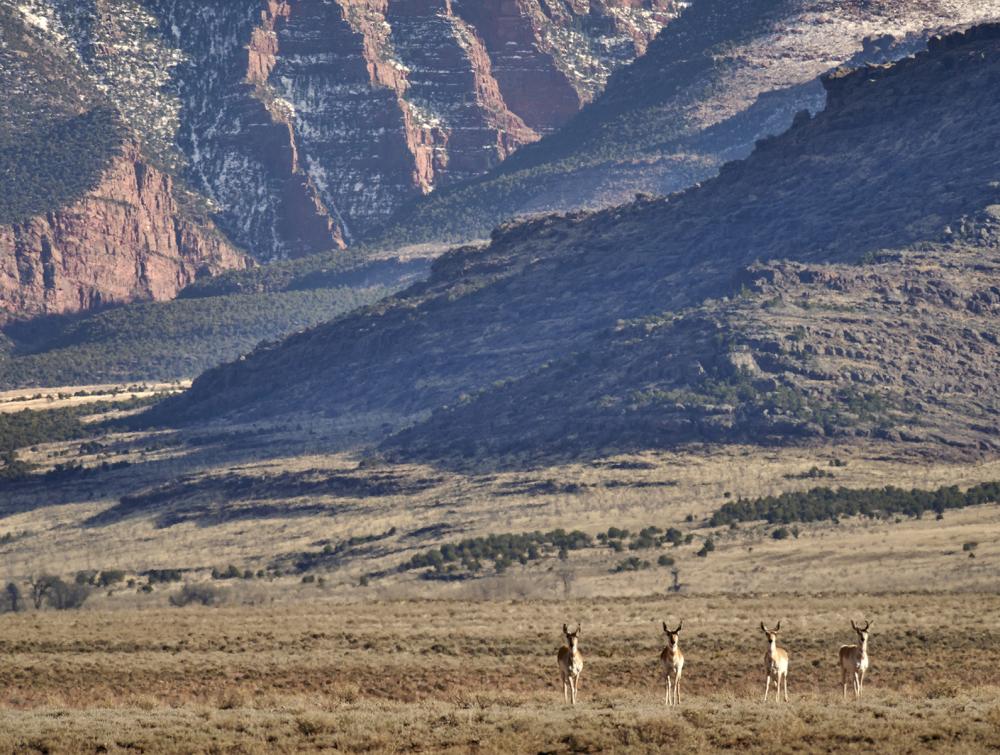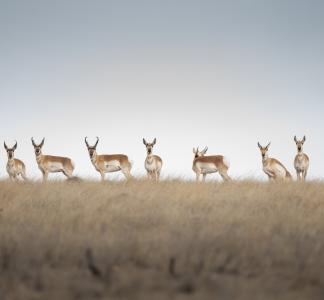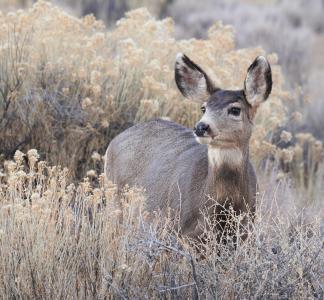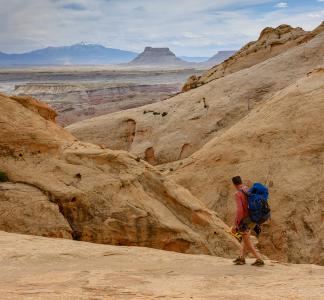Drilling could ravage wildlife habitat in draft Colorado plan. There’s still time to change course.

Pronghorn antelope on a grassy steppe in Colorado.
Jon Mullen
Colorado communities dissatisfied with draft plan for wildlife
Wildlife across the globe are in trouble. From the Arctic to the tropics, populations are declining and species are disappearing at alarming rates. Just last year, the U.S. Fish and Wildlife Service declared another 21 endangered species extinct, noting that the announcement should come as a “wake-up call” to prioritize protecting vulnerable populations.
Look no further than Colorado, a state with millions of acres of prime wildlife habitat, where compounding threats—including oil drilling—are taking a heavy toll on iconic big game species like bighorn sheep, elk, mule deer and pronghorn. The U.S. Bureau of Land Management (BLM) recently agreed to amend its statewide management plans to protect more big game habitat. But their new draft falls short—particularly when it comes to oil and gas leasing, which would still be allowed to dominate the land.
Of the 13 million acres that BLM manages in Colorado, 8.6 million have been identified as high priority habitat for bighorn sheep, elk, mule deer and pronghorn. The agency’s preferred course of action would leave 7.4 million acres (86%) of that high priority habitat open for oil and gas leasing. Even the agency’s strictest proposed course of action—Alternative D—would still leave 3.4 million acres (40%) open to leasing.
One of the major stumbling blocks in the current draft is its focus on mitigating impacts to wildlife instead of avoiding them altogether. For example, the current draft would place new limitations on how many structures can be built in an area, but it does not change how much land is available for leasing to being with. While these mitigation tactics are a valid tool, they should be part of a holistic solution that includes a reduction in leasing. The fact of the matter is that even when projects are done in “cooperation” with conservation, as BLM proposes, the mere act of building a well pad does harm to wildlife.
But the draft amendment also fails to consider the impacts that other land uses—specifically recreation and renewable energy development—have on wildlife. As renewable energy projects proliferate on public lands, which is a necessary part of the national transition from oil and gas, careful development will be needed to manage impacts to wildlife.
The same can be said for expanded outdoor recreation on public lands, which Colorado’s economy increasingly relies on. The draft amendment does not address either topic at all, leaving a potentially threatening gap in planning.
So while the development of this amendment should be celebrated, the current draft is not enough to meet the urgency of the moment. As Jim Ramey, Colorado state director for The Wilderness Society notes, “The agency has a tremendous opportunity to make headway against both the climate and biodiversity crises… [BLM should] strengthen and approve this plan with public feedback ASAP.”



